A customer journey template is a customer journey mapping tool that a business can use to start mapping out all the touchpoints a customer can encounter over the course of their customer journey.
The map template is usually divided into the different stages of the customer journey: awareness, consideration, purchase, retention, and loyalty.
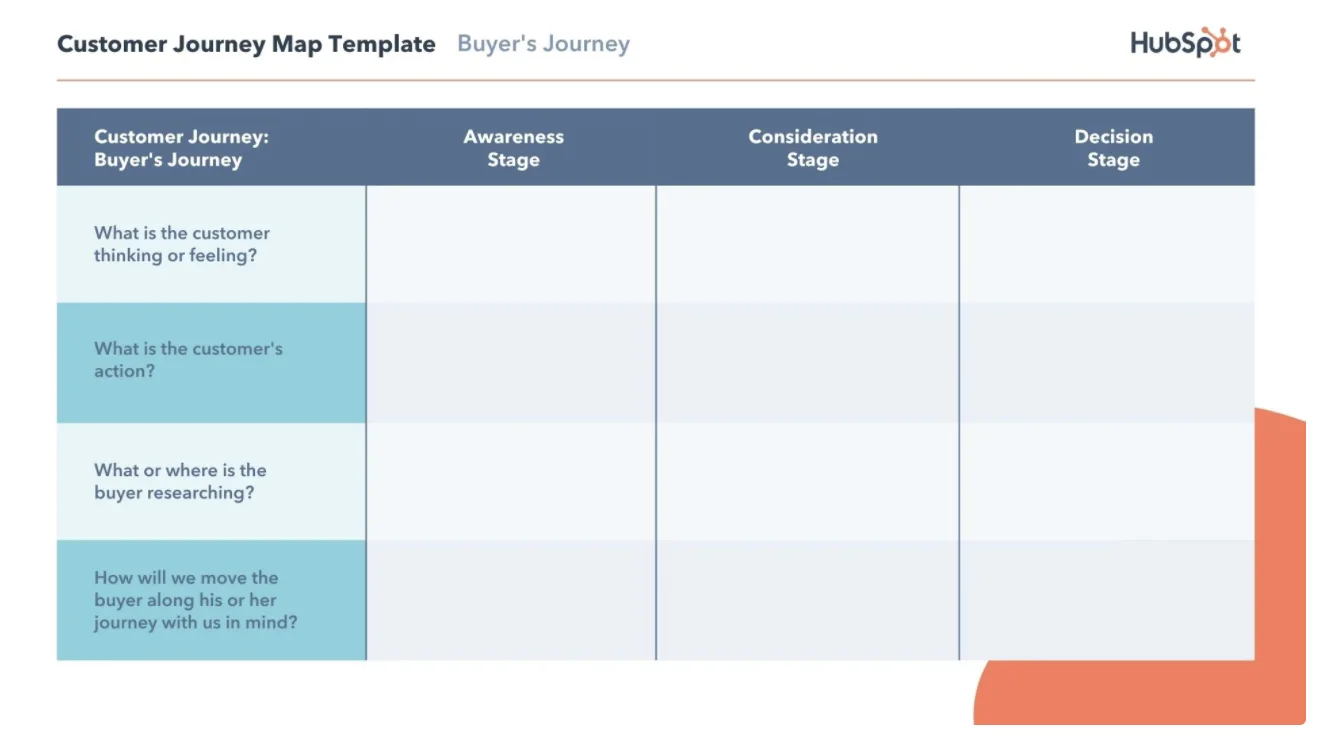
Source: Hubspot
At each of these stages, the template can include corresponding touchpoints, key metrics, and customer or buyer persona.
Once all the information has been gathered and filled out, the customer journey template becomes the customer journey map that guides marketers as they go about their outreach to existing and potential customers.
How to Use a Customer Journey Template
The way marketers typically think of a customer journey template is as a pre-designed guide that they can base their own customer journey map off of.
So, the best way to use it is to treat it as a jumping-off point.
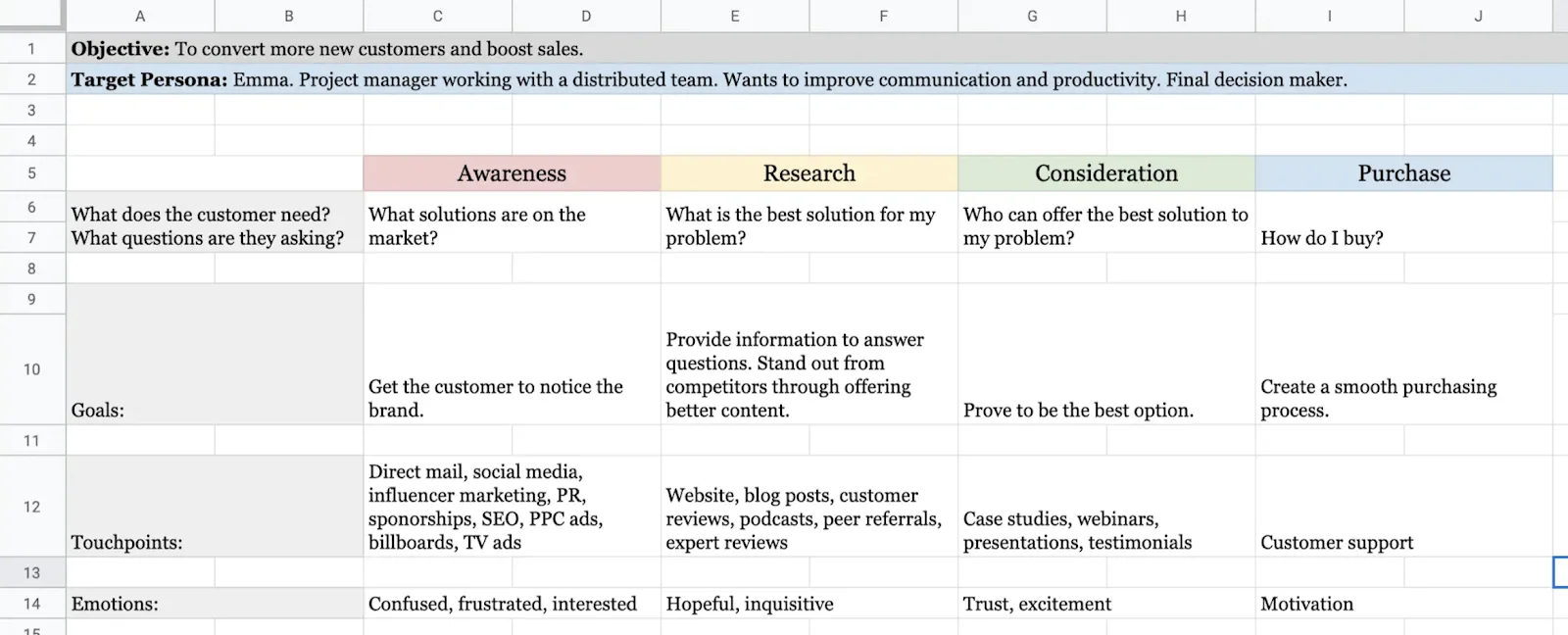
Familiarize yourself with the various elements of the template and what kinds of information and decisions it requires.
Then, based on your business's experience with actual customers and their typical buying process, keep the parts of the template that works for you and modify the rest.
From there, you can start creating or mapping your customer journey.
How Do You Create a Customer Journey?
Mapping a customer journey is a multi-step process that must begin with your customers.
Start by identifying customer segments and creating buyer personas.
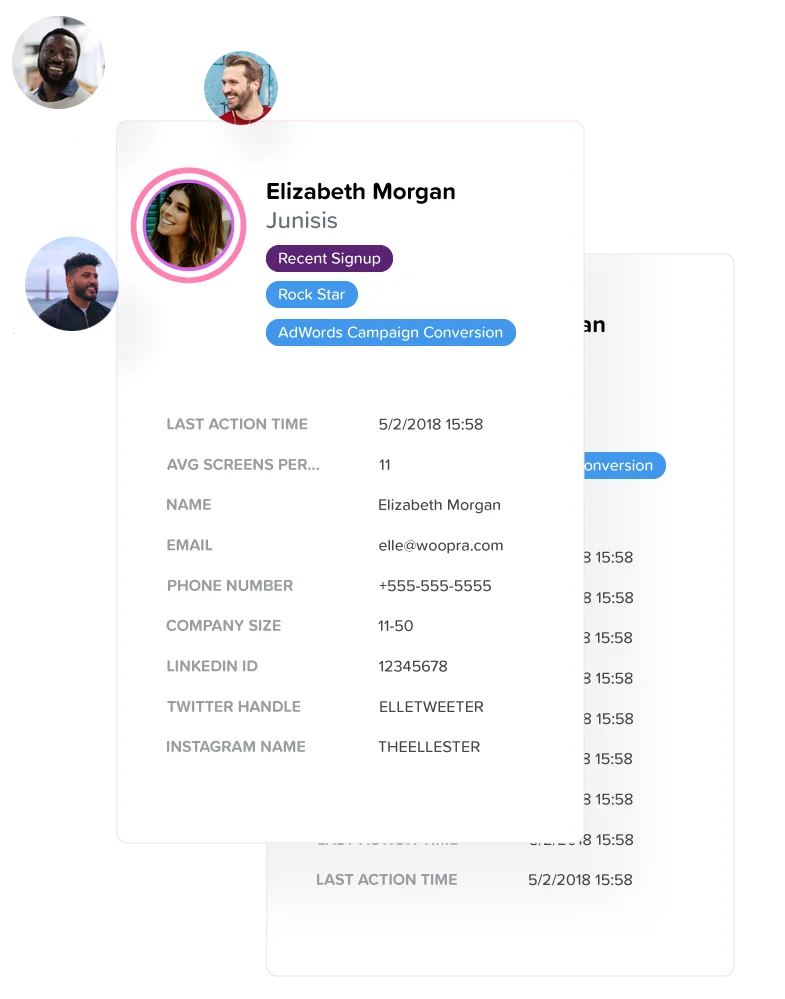
These two exercises are interlinked because they both deal with leveraging customer data to understand the different types of customers your business may have, their customer behaviors, and their needs.
Also Read: Customer Retention Metrics
Once you have these personas, pick the one you want to target with this customer journey and start mapping.
Map out all the touchpoints on the journey from start to finish and get to know what the customer experience has typically been like at these different touchpoints.

You may even create an empathy map at this point to flesh out what any one customer persona says, thinks, does, and feels.
With this knowledge, you can better put yourself in your customers’ shoes and predict the actions they may take, which will help you to create customer interactions that better suit your customers’ needs and your business goals.
Now that you have mapped it all out, you need to test it out firsthand: take the customer journey yourself to figure out what works and what doesn’t work.
After that final step, the customer journey is ready.
Validate the customer journey map in real life with your customers and keep going back to it for customer journey optimization.
Types of Customer Journey Maps
Current State Map
A current state map visualizes the current journey your customers have with your company.
This includes all the stages, touchpoints, and interactions customers are currently having on their journey with you.
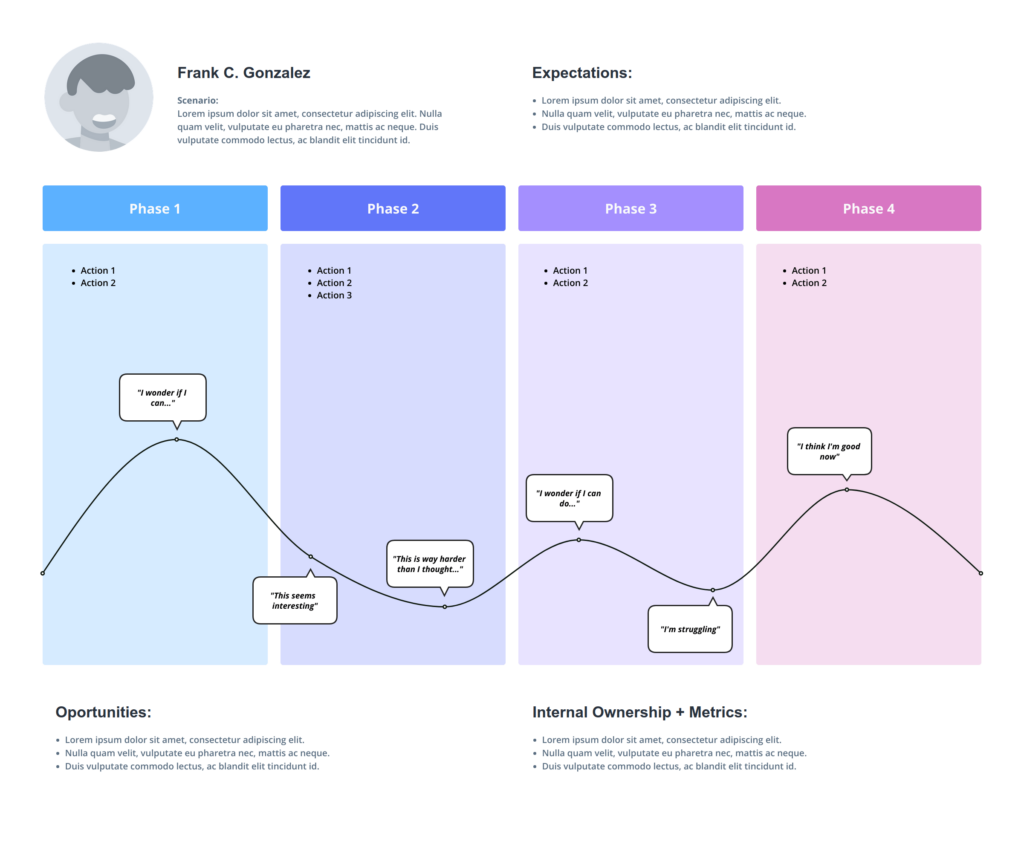
Source: Sprout Social
The map will also include customers’ emotions and pain points along the current journey so that marketers can improve the journey and optimize conversions.
The purpose of the current state customer journey map is for businesses to clearly visualize the current customer experience and identify any areas for improvement.
By undertaking such customer-centric exercises, businesses will be able to increase their customer retention rates by making sure that their customers become loyal, lifelong customers.
Day in the Life Map
A day in the life map visualizes the customer persona’s typical day and their typical actions and behaviors throughout the day, regardless of whether that actively involves interacting with your business or not.
This can include what the customer does in the morning, at work, during breaks, and after work.
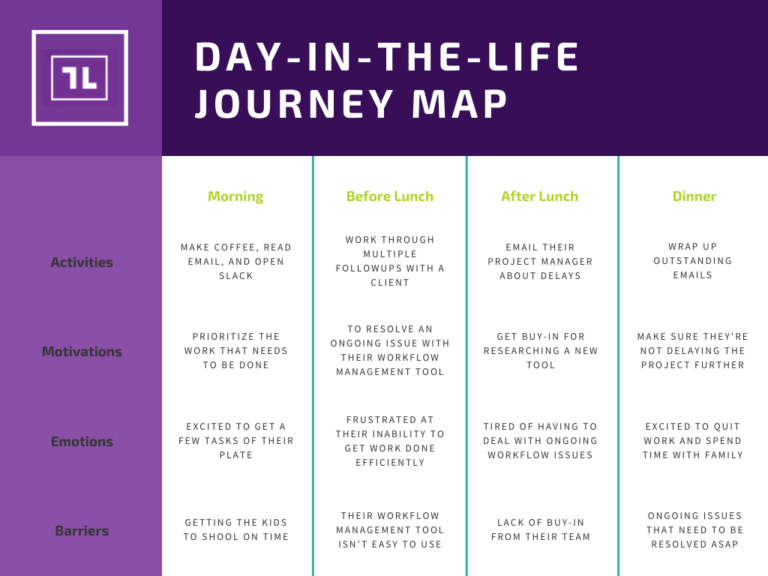
Source: Taplytics
While it may seem strange to want to know what your customers are doing when they are not checking out your product offerings or contacting your customer service center, this is valuable information that will influence how, when, and where you engage with your customers.
The purpose of the day in the life customer map is for businesses to get more insights into how their business may fit into a customer’s life.
For instance, if marketers know that their target audience checks social media during their commute or lunch break, they can schedule engaging social posts during those specific times.
By the same logic, if customers are more likely to check their emails and open invitations to events or webinars in the afternoon, then businesses should plan their email marketing accordingly.
The day in the life map, like the current state map, is customer-centric, and grounds businesses in what customers actually need and what can guarantee customer success and satisfaction.
Future State Map
The future state map visualizes a new journey that you are creating for your customers to have with your business.
Instead of repairing the existing user journey, marketers use the future state map to create new experiences for their customers based on the business’s vision and strategic goals.

Source: Nielsen Norman Group
This can include new touchpoints and new interactions that businesses want for their customers.
In other words, this is the ideal journey that businesses want their customers to enjoy.
The purpose of the future state map is thus to rethink how to best engage with customers based on past experiences and interactions and to acquire new customers based on what has proven to be successful.
Service Blueprint
The service blueprint is less a type of map and more a layered visualization of any of the aforementioned customer journey maps.
These layers include a simplified version of the customer journey map plus multiple layers of the behind-the-scenes processes and systems that make the journey possible.
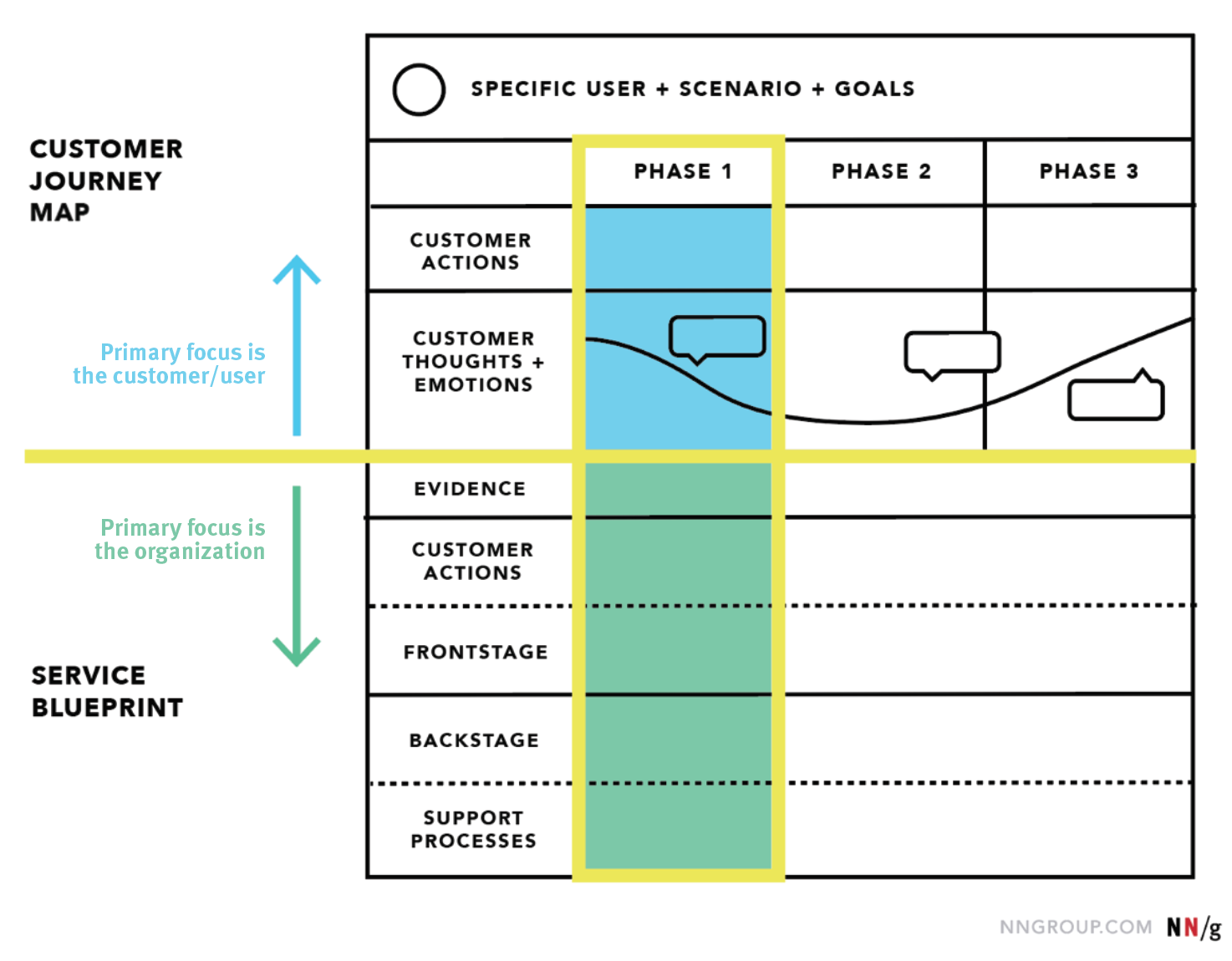
Source: Nielsen Norman Group
These behind-the-scenes elements will detail the people, procedures, and operations from the business end that all come together to create the customer experience that the user journey map visualizes.
The purpose of this service blueprint is to let all relevant stakeholders know where they need to step in, how they can better work together, and address the root causes of the problems along the current customer journey.
Circular Customer Journey Map
A circular customer journey map is similar to a typical customer journey with different stages, touchpoints, and interactions, but the key difference is the shape.
Circular in shape, this customer journey map depicts the customer journey as cyclical and recurring, as opposed to its linear map counterpart, which has a clear end.
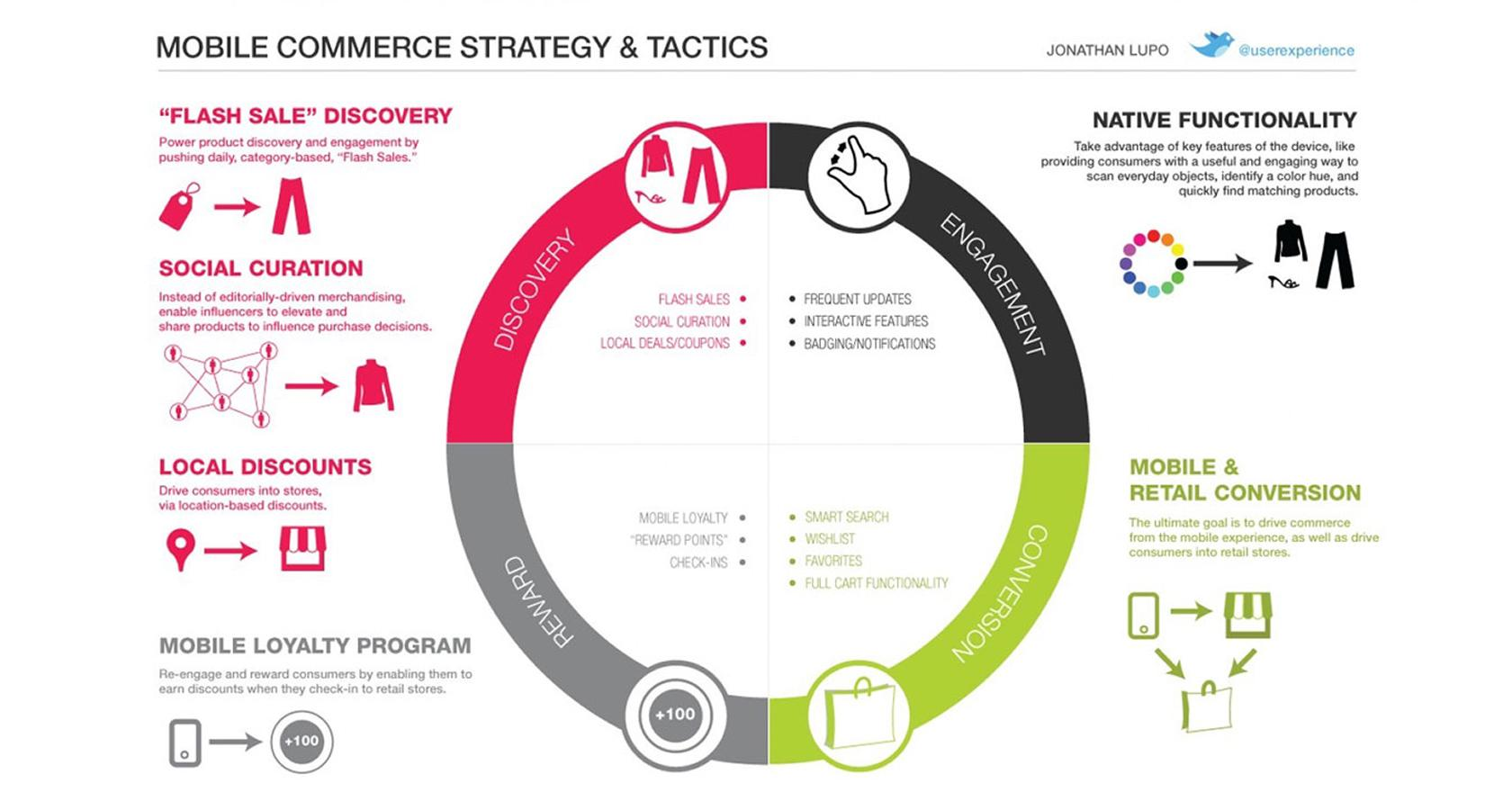
Source: Visual.ly by Jonathan Lupo
The purpose of the circular customer journey map is to visualize and thus focus the business’s attention on more than the purchase journey, to encompass the overall relationship with the customer.
These additional elements can include customer service, brand interactions, and community building, which are all important elements that customers look at in today’s competitive market.
Customer Journey Template Examples
If you have made it to this point in our blog post, you have a pretty good idea of customer journey maps and templates.
We want to highlight some real-life and hypothetical customer journey map examples that we find interesting to help you as you get started on your journey mapping.
Example #1: E-commerce
The global e-commerce industry has grown significantly since the start of the Covid-19 pandemic. To stay competitive, businesses need to create a customer journey that converts well and fast.
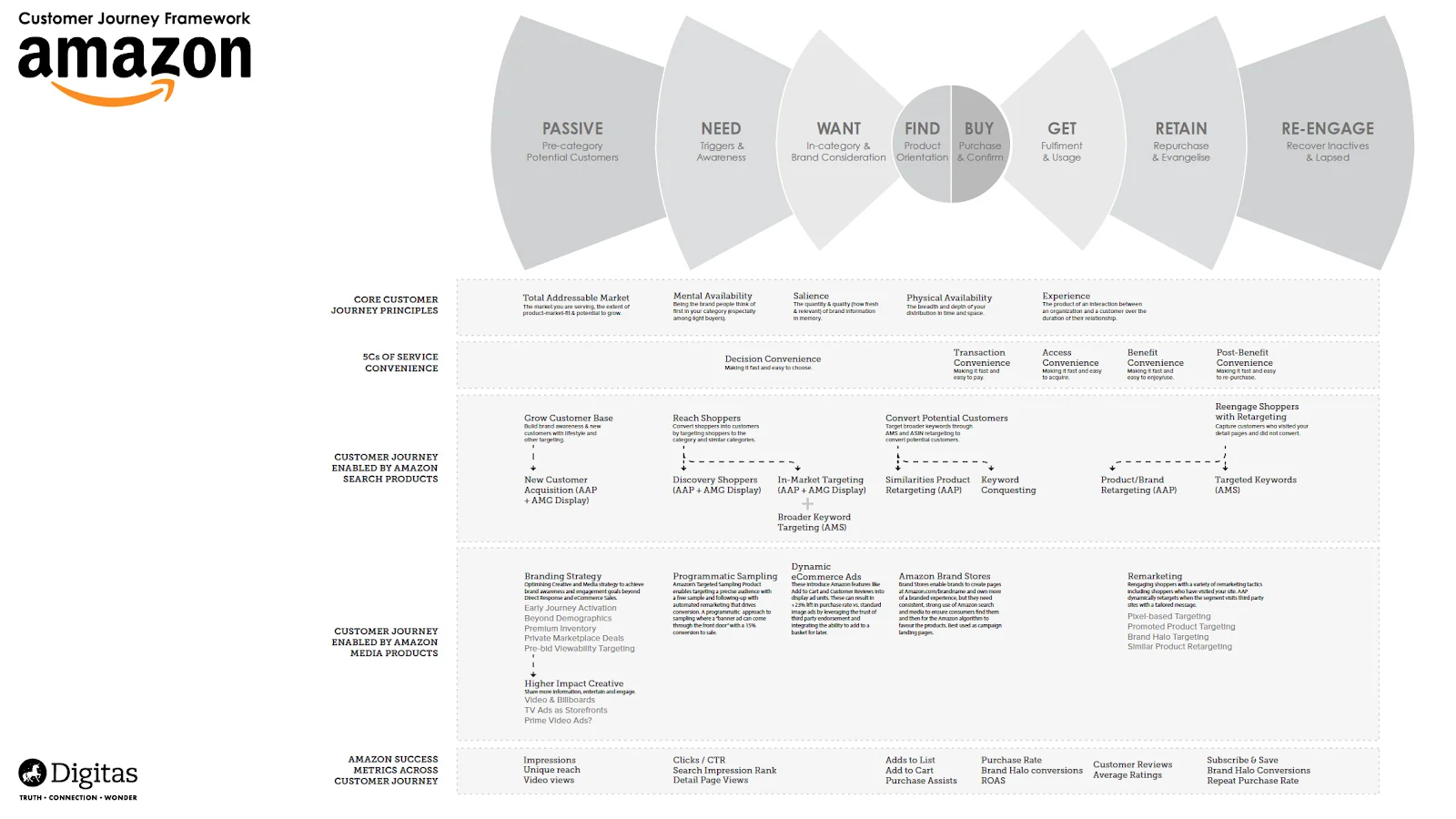
While this can be challenging, the elements of an e-commerce customer journey are rather straightforward.
Since most of us have shopped online, we know that whenever a new online shop pops up, a customer typically hears about it from their friends on social media.
If it piques their interest, a customer will take a quick look at the site and compare it to the other alternatives they are used to.
Next, if they find a product they like at the price they want, they will add it to the cart and check out. And, if the product is as good as advertised and the delivery process is smooth, the customer may come back and shop with you again.
They may even recommend your shop to their friends.
What we just described are the five stages that should feature in an e-commerce customer journey map: awareness, consideration, conversion, retention, and advocacy.
Different businesses will name or even group these stages differently on their maps, but the principle is the same.
With e-commerce, businesses need to maximize exposure, encourage checkouts, avoid cart abandonment, and convert shoppers into advocates for their business.
Example #2: B2B Software Companies
B2B software companies provide their software solutions to other businesses over the internet and, typically, with a subscription model.
Since these solutions are intended for a company to use and contracts are usually a year long at least, the customer journey, especially the consideration stage, can be long depending on the barriers to adoption.
Gartner’s B2B buying journey is a great example of the B2B SaaS customer journey.
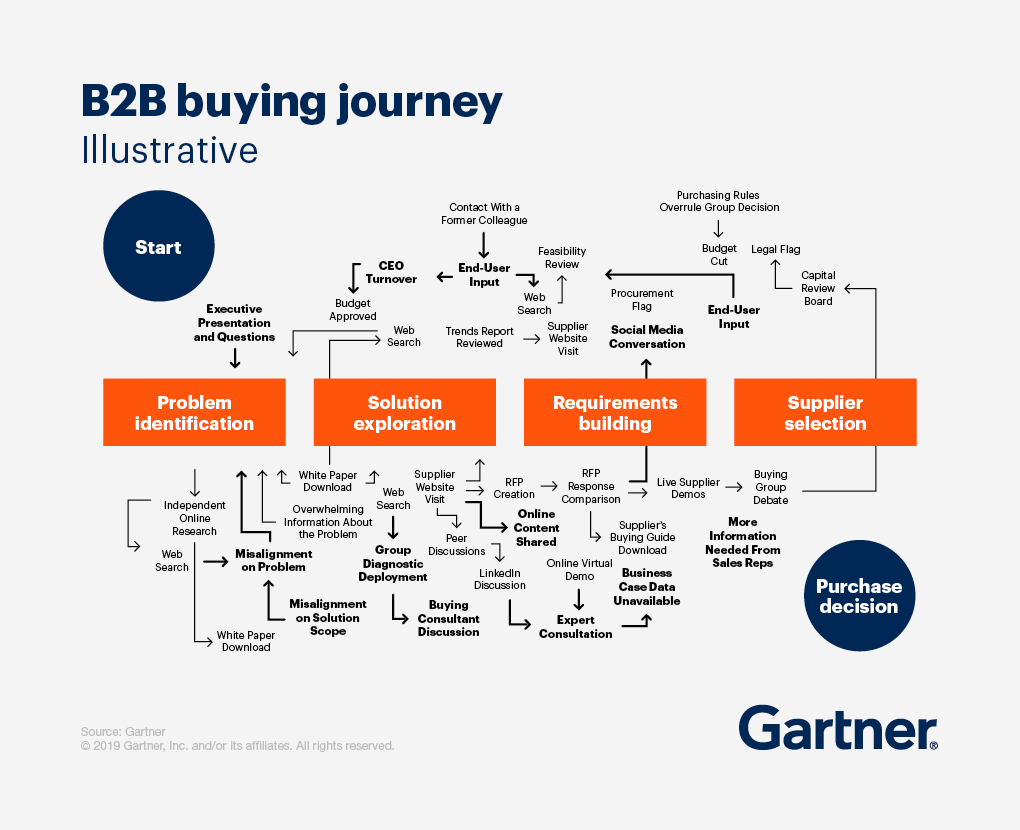
Source: Gartner
The four actions that Gartner highlights — problem identification, solution exploration, requirement buildings, and supplier selection — can be translated to the typical customer journey stages of research, consideration, workshop, purchase, and renewal.
Unlike an e-commerce customer journey map, the B2B SaaS map will likely involve more stakeholders from the potential customer’s side, everyone from those who are doing the research to those who will actually be using the solution.
Moreover, the purchase and onboarding stage will involve customer success managers to ensure that the customers know how to use the solution and fully integrate it into their company’s operations.
The key to renewal is making the solution an indispensable part of the company’s business operations.
Example #3: SaaS Companies
A B2C SaaS customer journey map is a lot like its B2B counterpart, except likely with fewer barriers to adoption.
Think about apps we all know and use, like Netflix or Spotify.

While the customer journey may follow the typical awareness, consideration, purchase, and renewal trajectory, part of the consideration process will be testing out the solution.
Some of these SaaS products have free trials, so customers get to enjoy the product and see just how much value they really add.
If they like the product, customers will go ahead with the purchase (in many cases, this just means not canceling the subscription before the free trial period ends).
Once the initial purchase is made, renewals, likely automatic as with many B2C SaaS products, will be the next and last step of the customer journey.
For B2C SaaS companies, the purpose of the customer journey map is to figure out pain points and barriers to conversion, the most important of which is how to get customers to pay for your product when you may have a freemium version and continue paying for it.
Thus, the map will highlight key customer behaviors, motivations, and emotions that are linked to the business’s product.
Example #4: Gaming Apps
A B2C app that many of us are familiar with is a gaming app.
A gaming app is quite representative of most apps that are on the market nowadays, so we can look at a gaming app customer journey map as an example.
As shown in this free template, the main stages of the journey are awareness, search, consideration, and conversion.
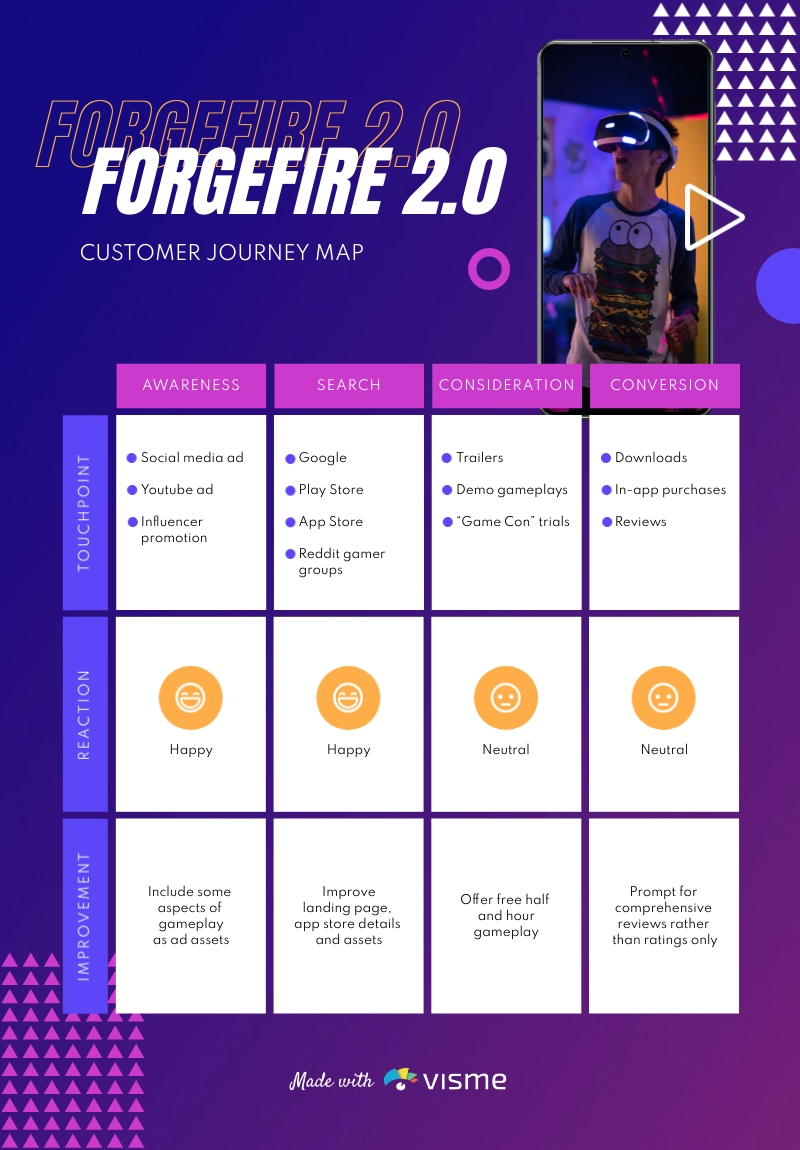
Source: Visme
The stage that may differ from that of other customer journey maps is the conversion stage because, for apps, there are multiple major conversions to track.
These include installs, in-app purchases, and other game-related spending.
Because most apps are free, apps need to engage their users and deliver an impressive user experience so that users will become so invested in the app as to purchase a premium version or additional features.
Example #5 B2B Service Business
For a B2B service business, think of a consulting firm and the service they provide to businesses.
The typical customer journey, especially in the awareness, research, and consideration phases, can be quite lengthy.
Companies typically research a lot of different options when looking for consultants, and they may even send out a request for proposals (RFPs).
Once they receive the proposals, the client companies will consider qualifications, proposed contributions, costs, etc.
As a consulting firm, the journey map will not only focus on customers’ needs but also the different stakeholders that will need to be involved to address these needs, from the initial engagement stage all the way to the execution stage.
As a B2B service provider, consulting firms can also include key performance indicators that are important to their clients in these customer journey maps to make them more comprehensive and helpful.
Are you looking for help with your customer journey map? Do you need customer journey analytics tools to better understand how to improve your journey? Schedule a demo or sign up for free now.



